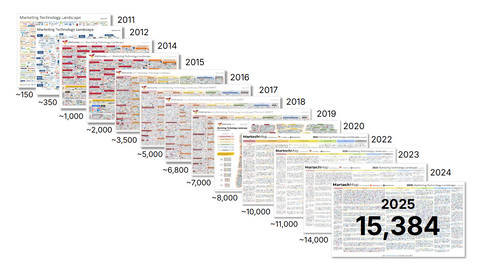As the guardians of effective project portfolio management, Project Management Officers (PMOs) juggle numerous responsibilities: tracking KPIs, allocating resources, strategic planning, coordinating teams, and more. To meet these growing demands, PMOs rely on an increasingly diverse and high-performing range of SaaS tools.

1. Project Management Tools
Project management is at the heart of the PMO role. To efficiently oversee projects and ensure their success, PMOs equip themselves with SaaS tools specifically designed to streamline planning, coordination, and monitoring. Examples include:
Asana
is a collaborative platform that simplifies project organization and tracking. Its intuitive interface and multiple views (list, calendar, timeline) allow teams to visualize tasks according to their needs. Workflow automation and varied integrations save valuable time.
Trello
uses a highly visual Kanban board system. Its ease of use makes it an ideal choice for small teams or less complex projects. It remains very flexible and can scale with growing needs.
Monday.com
offers an attractive, fully customizable solution. It enables advanced automation, adapts boards to each project type, and easily connects to other business tools.
ClickUp
positions itself as an all-in-one platform, centralizing tasks, documents, goals, and reports, while offering impressive modularity to fit the specific processes of each organization.
Jira
is particularly popular in Agile or DevOps environments. It excels in sprint and backlog management and integrates seamlessly with Confluence, making it a powerful suite for technical project oversight.
SaaS project management tools are essential in the daily work of PMOs. They ensure smooth orchestration of tasks and foster transparency and accountability across teams.
2. Resource Management Tools
Another major challenge for PMOs is the effective management of human and material resources. Specialized SaaS tools in this area are key to avoiding bottlenecks and maximizing productivity. Notable examples include:
Float
is a highly visual planning tool that provides an at-a-glance view of team availability. Its clear interface and drag-and-drop scheduling make task assignment easy and fluid.
Resource Guru
offers an intuitive approach to resource management, factoring in leave, absences, and real-time availability, which enables quick schedule adjustments.
Hub Planner
is designed for capacity management. It offers project- or team member-based views, integrated time tracking, and detailed reporting to optimize workloads.
Mavenlink (now Kantata)
combines project, resource, and budget management. Its integrated view gives PMOs a comprehensive picture of operational and financial performance.
With these SaaS tools, PMOs can adjust assignments in real time, anticipate workload spikes, and ensure optimal resource utilization.

3. Reporting and Visualization Tools
PMOs regularly provide reports to leadership and stakeholders. To do this, they need powerful reporting tools capable of aggregating data from multiple sources.
Power BI
Microsoft’s solution, allows the creation of visually rich and interactive reports. It connects to a wide range of data sources and integrates naturally with Excel and Teams.
Tableau
is renowned for its high-quality visualizations and deep analysis capabilities. It offers dynamic data exploration with interactive filters and customizable dashboards.
Google Data Studio
is a free tool that simplifies the creation of dynamic, collaborative reports. It’s ideal for teams already using Google Workspace, thanks to seamless integration.
Klipfolio
offers configurable dashboards updated in real time, making it a practical solution for tracking operational KPIs without delays.
Databox
emphasizes mobile accessibility and automated reporting, allowing PMOs to monitor KPIs from their smartphone with personalized alerts.
These visualization tools help PMOs justify decisions, identify performance gaps, and communicate more effectively with decision-makers.

4. Budget and Financial Management Tools
Budget control is a pillar of successful project portfolio management. PMOs need tools that can track spending, forecast costs, and monitor margins.
Sciforma
is a robust solution for financial project management, enabling the creation of forecast budgets, real-time cost tracking, and ROI evaluation for each initiative.
Planview
helps PMOs prioritize investments across projects, providing a strategic view of budgets and aligning resources with business goals.
Workday Adaptive Planning
offers an agile approach to financial planning, allowing PMOs to simulate different budget scenarios and generate real-time reports while connecting to the company’s ERP system.
Harvest
is a simple yet effective solution for time tracking and invoicing, ideal for service-based or time-and-materials projects.
Toggl Track
facilitates multi-project tracking with an intuitive interface, generating detailed reports on time allocation, useful for productivity analysis.
By integrating financial SaaS tools, PMOs gain a clear, consolidated view of costs, enabling rigorous management and informed decision-making.

5. Collaborative and Communication Tools
Strong communication is essential to project success. PMOs use collaborative tools to ensure smooth information flow.
Slack
is a highly responsive team messaging app. With its thematic channels, numerous integrations, and automated bots, it centralizes project-related discussions.
Microsoft Teams
integrates fully with the Microsoft 365 environment, combining video conferencing, file sharing, and real-time chat, making remote collaboration easy.
Google Chat
offers a lightweight alternative for Google Workspace users, structuring conversations by project and maintaining a record of key discussions.
Google Workspace
enables real-time multi-user collaboration on documents. Its cloud storage and collaborative editing make it indispensable for distributed teams.
Microsoft 365
provides a complete collaboration ecosystem, allowing secure file sharing and co-editing with universal device compatibility.
Notion
stands out for its ability to centralize information in the form of databases, tables, or documents, allowing teams to create structured, shared workspaces.
Confluence
is ideal for project documentation. Its integration with Jira links tasks to content, improving tracking and knowledge management.
These tools promote collective intelligence and reduce silos, enabling PMOs to strengthen cohesion and transparency across projects.
Conclusion
The PMO landscape is constantly evolving, driven by increasing digitalization and higher expectations for strategic oversight. SaaS tools have become indispensable allies in addressing these challenges: they help structure, automate, and optimize PMO tasks while enhancing collaboration and transparency. By carefully selecting and combining these tools, PMOs can significantly improve their efficiency and relevance in their role as architects of project performance.
The PMO experts at SaaS Advisor have in-depth expertise across the SaaS ecosystem dedicated to project portfolio management. Whether for strategic initiatives or operational deployments, our consultants support you at every stage—from selecting the tools best suited to your organization to configuring and fully integrating them.





